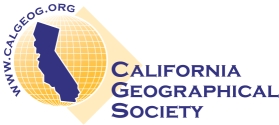- DSpace Home
- →
- CSUN ScholarWorks
- →
- CSUN Open Access Journals
- →
- The California Geographer
- →
- The California Geographer Vol. 53 (2013)
JavaScript is disabled for your browser. Some features of this site may not work without it.
The California Geographer Vol. 53 (2013)
Browse by
Recent Submissions
-
(California Geographical Society, 2013)List of the student award winners from the California Geographical Society 2013 Conference: DAVID LANTIS SCHOLARSHIPS Graduate Award ($500) Zia Salim, SDSU/UCSB Undergraduate Award ($400) Matthew Wigginton Conway, UC ...
-
(California Geographical Society, 2013)The 67th annual California Geographical Society Conference was held in San Luis Obispo from April 26th through the 28th, with more than 340 geographers from the academic, government, private, and nonprofit sectors making ...
-
(California Geographical Society, 2013)Southern California’s coastal sage scrub vegetation, found in limited coastal lowlands, is directly threatened by habitat loss due to urban sprawl. The West Coyote Hills, located in the city of Fullerton, California, is ...
-
(California Geographical Society, 2013)Outlined below are the Star Wars analogies I’ve used over the years to help students understand that, by majoring in geography, they are entering into an apprenticeship from which they should emerge, after a few years of ...
-
(California Geographical Society, 2013)Geographic and climatic modeling has garnered recent attention among criminologists, but few have combined these techniques to form a single model of crime. Among limited intraurban spatial-climatic models, each explores ...


